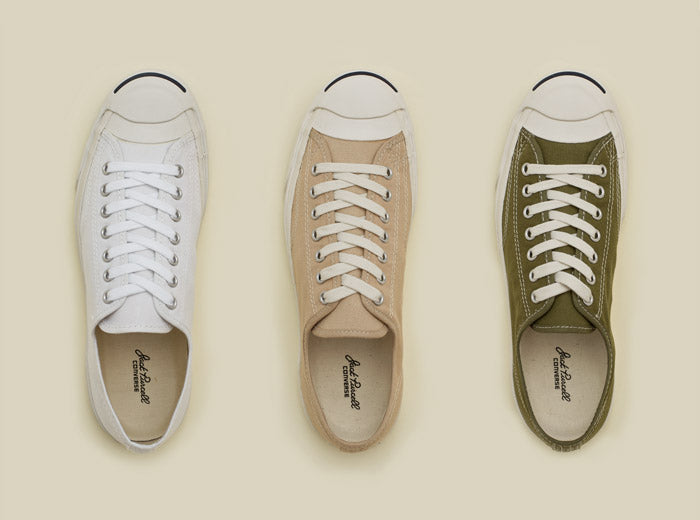
From Air Jordans to Lee Carvallo’s Putting Challenge, everyone loves a good signature product, and when it comes to signature products, none have quite as much worldwide appeal as the Converse Chuck Taylor All Star. But while there’s probably university courses devoted to ‘studying the Converse All Star as an icon’, much less is said about its smiley faced brother from another mother — the Jack Purcell. With that in mind, let’s take a trip back in time as we investigate the story behind this fine alliance of canvas and rubber.
Back in the twenties lawn-sports were big business. Croquet players brushed their teeth with caviar and boules players blew their noses with gold leaf hankies, but by far the glitziest sport of the lawns was badminton. I haven’t played badminton in quite some time, but from what I can remember it’s not very good — you can’t play it if it’s windy, the shuttlecock constantly gravitates towards tree branches and even maintaining a short rally entails ‘Bambi on an ice-rink’ style lunges.

But in the twenties they bloody loved it, and the top players were household names, (at least in some households). One such player was a Canuck by the name of Jack Purcell, who after taking up the sport in 1924 quickly rose to the heady heights of Canadian National Badminton Champion. After losing his amateur status due to all the media coverage he was getting, he stepped up to the world of professional badminton, and by 1933 he was World Champion.

Meanwhile, in the world of sports footwear, car tyre companies reigned supreme. Firestone had their own line of shoes, Dunlop were reportedly selling over 2 million pairs of their ‘sandshoes’ a year and the U.S. Rubber Company weren’t doing too badly with their Keds canvas trainers. Not ones to be outdone, BF Goodrich (the tire company responsible for the safe landing of Charles Lindberg’s landmark flight across the Atlantic, amongst other things) were on the lookout for a slick shuttlecock-shaman they could get to help design their badminton shoes. And as you’ve probably guessed, that slick shuttlecock-shaman was Jack Purcell.
Launched in 1935, the BF Goodrich Jack Purcell (Converse bought out BF Goodrich in 1972, which explains the name change) was a revelation to badminton players everywhere. With a tough rubber toe cap, stubbed toes were a thing of the past, and thanks to hefty sole, lawn-purchase reached dizzying heights. Jack himself retired in 1945 after wartime rationing had led to a racket drought (this isn’t a joke, during WW2 material once reserved for badminton equipment was saved for the war effort), but his shoes were still flying out, and it wasn’t long before they’d outgrown the lawns and could be seen all over the place.
Here we’ve got Woody Allen trying out the Execu-ciser in his 1971 film, Bananas. What’s he got on his feet? You’ve guessed it.

Here we’ve got a standout image from Stephen Shore’s 1972 photo-book, American Surfaces. Notice how the dog’s snarl is casually juxtaposed with the wry smile of the Jack Purcell? He wasn’t the second photographer to have a solo exhibition at the Metropolitan Museum of Art for nothing…

Here we’ve got a photo of post-post-post hardcore poster-boys Fugazi taken by Glen E. Freidman. Whilst your eye may naturally wander to the flailing Chuck Taylors of Guy Picciotto, what are they on Ian Mackaye’s feet? Can I get a close up?

Just as I suspected, Jack Purcells. But remember, these are just shoes — they won’t necessarily make you any better at badminton, playing guitar or writing witty, yet poignant films about neurotic New Yorkers — they will make your feet look approximately 88% better though.